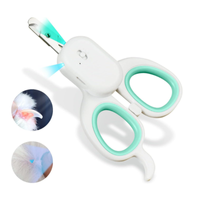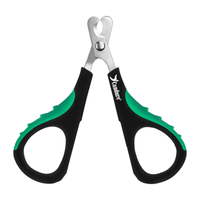Vet explains how to cut rabbit nails (without hurting your bunny)
Wondering how to cut rabbit nails? Here are the dos and don’ts, according to our expert.
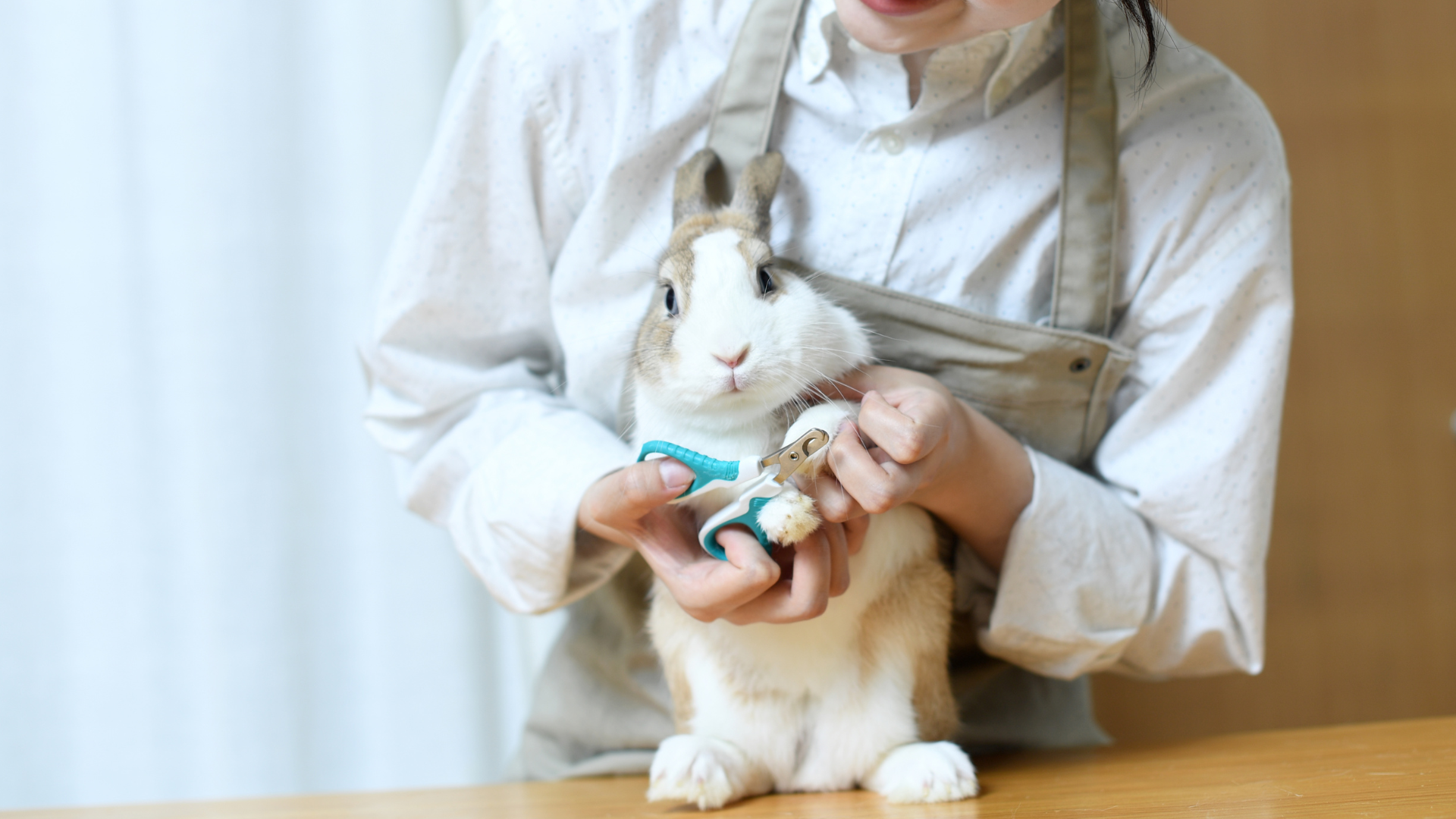
If you want to learn how to cut rabbit nails, then you've come to the right place. We asked vet Dr. Rebecca MacMillan the questions you need to know, like how to do it safely and whether you can use regular nail cutters.
For first-time bunny owners, the idea of trimming their nails might seem a little daunting (especially if they don't like being held!) After all, the last thing we want to do is hurt them, get it wrong or lose their trust.
However, it's easier than you might think and after a couple of attempts, you'll get the hang of it. Your bunny will also get used to it over time as it becomes part of their regular rabbit care routine.
Unsure whether you need to cut them yet? Check whether their nails go beyond the hair on their paws. If they do, they're definitely worth a trim! Here's a complete guide on how to get started (including the three mistakes to avoid):
How to cut rabbit nails
Make sure you give yourself enough time — this isn't something you want to rush. To make things easier, it's worth asking someone to help you hold them while you cut their nails (especially if your bunny is on the stubborn side!) You can also wrap them in a towel to keep them calm.
Dr. MacMillan warns that you should avoid cutting their nails too short or cutting into the sensitive area towards the base of the nail. If you do, this will cause bleeding and discomfort for your bunny. In this instance, you should apply gentle pressure to the area with a tissue or cotton wool.
She explains: "In rabbits with white claws, you will see this as a pink vein-like line inside the nail. Cut the nail straight across, a couple of millimeters beyond this sensitive quick. The claw beyond this quick has no sensation and should cause your rabbit no discomfort.
"If your rabbit has darker nails, then this can be trickier, and you might have to estimate based on any lighter nails your pet has."
To keep the experience positive, Dr. MacMillan recommends comforting your rabbit and giving them a reward afterwards.
If you're still feeling stuck, ask your vet to show you the best technique.

Do I have to cut my rabbit's nails?
Dr. MacMillan says that rabbits' nails are constantly growing, and if they live outside, then they might be worn down via scratching and digging. So, does this mean that we need to intervene and cut them as well?
She says: "Most rabbits will need their claws cut at some point, especially as they don’t do as much digging as their wild counterparts. As a guide, your rabbit’s nails should not extend beyond the hair on their paws. If you see that the nails are protruding beyond this, then they definitely need trimming."
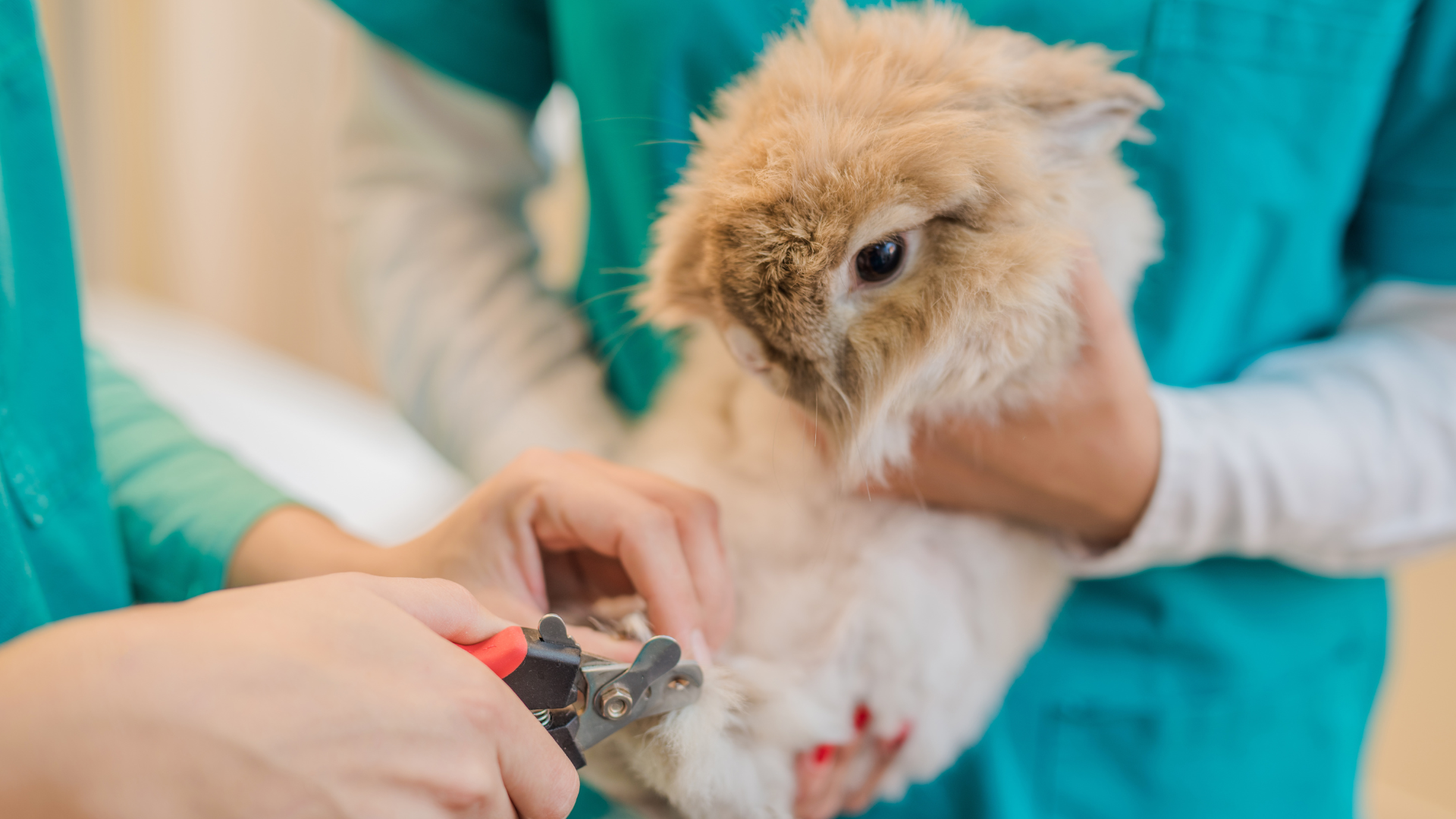
Can I cut rabbit nails with normal nail cutter?
Yes, it is possible to use human nail clippers, but it might be harder if you're cutting claws on larger rabbits.
Dr. MacMillan says: "The best tool to use to clip your rabbit’s claws is proper small pet nail clippers. These are sturdy and designed to tackle the thicker hind claws as well as the front ones."
Pakeway Pet Nail Clipper with LED & UV Light
These nail clippers feature an LED light which helps you find the right place to cut. They also have a UV light that can detect problems like ringworm in your bunny's skin. Plus, the non-slip handle is soft and easy to hold.
How to keep a rabbit still for nail clipping
If your rabbit is prone to wriggling, get another person to hold them while you trim. Dr. MacMillan recommends doing this on a non-slip surface or a towel and says that you should use gentle restraint.
She says: "Holding them too firmly, especially if they start resisting the nail trim, could result in injuries. If your rabbit is particularly flighty, it is probably best to trim their nails on the floor to avoid them falling from a height and injuring themselves. If you are struggling and your rabbit is difficult to handle, then take them to your vet for their nail trim instead."
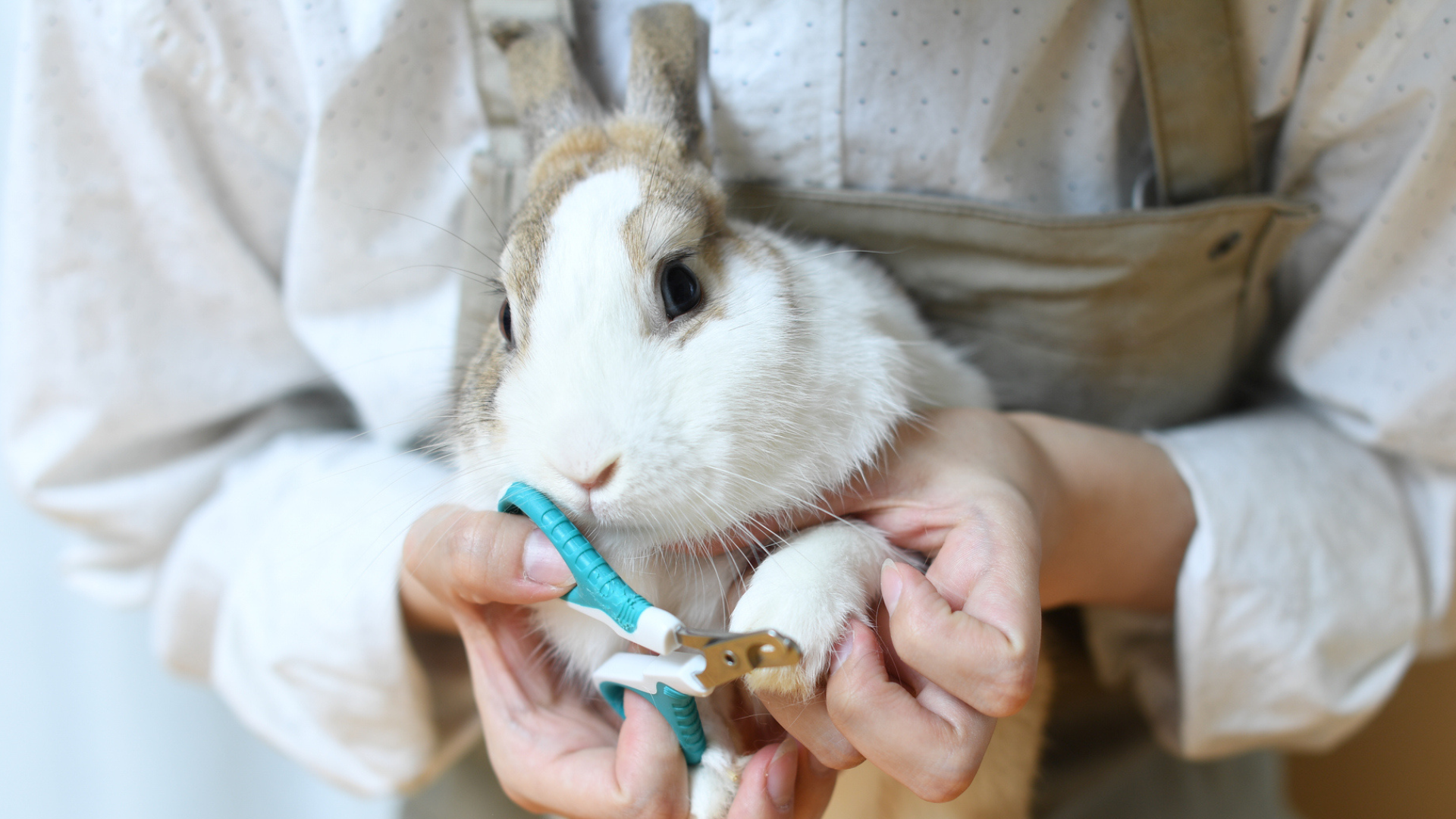
What mistakes should you avoid when cutting a rabbit’s nails?
All pet parents are bound to make a mistake at some point — no one is perfect, after all! However, here's a reminder of the things you should avoid:
1. Never hold your bunny on their back
Dr. MacMillan says: "Rabbits should never be held on their back for nail trimming. This practice is known as ‘hypnotizing’ and makes the bunny go into a trance-like state. However, this is known to cause an immense amount of stress to rabbits and mimics the response they have when being attacked by a predator."
2. Never restrain them with force
Make sure you're gentle with your bunny to avoid any injuries. If you find it too difficult to keep them still, your vet will be able to do it for you instead.
3. Never cut their nails too short
To avoid pain, bleeding and discomfort, don't cut them too short or into the sensitive area of the nail.
For more rabbit content, read our features on bunny binkies and tips for keeping indoor rabbits .
These affordable nail clippers are easy to use and help you make a precise cut. They also feature a non-slip design making them comfortable on your hands.
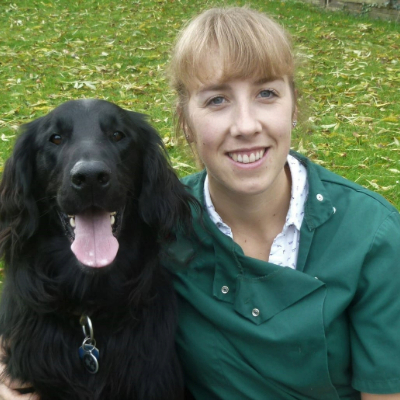
Rebecca is a vet surgeon who graduated in 2009 from the Royal Veterinary College in London. She has a wealth of experience in first opinion small animal practice, having done a mixture of day-to-day routine work, on-call emergency duties and managerial roles over the years. She enjoys medicine in particular and she is proud to have recently achieved a BSAVA postgraduate certificate in small animal medicine (with commendation).
PetsRadar Newsletter
Get the best advice, tips and top tech for your beloved Pets
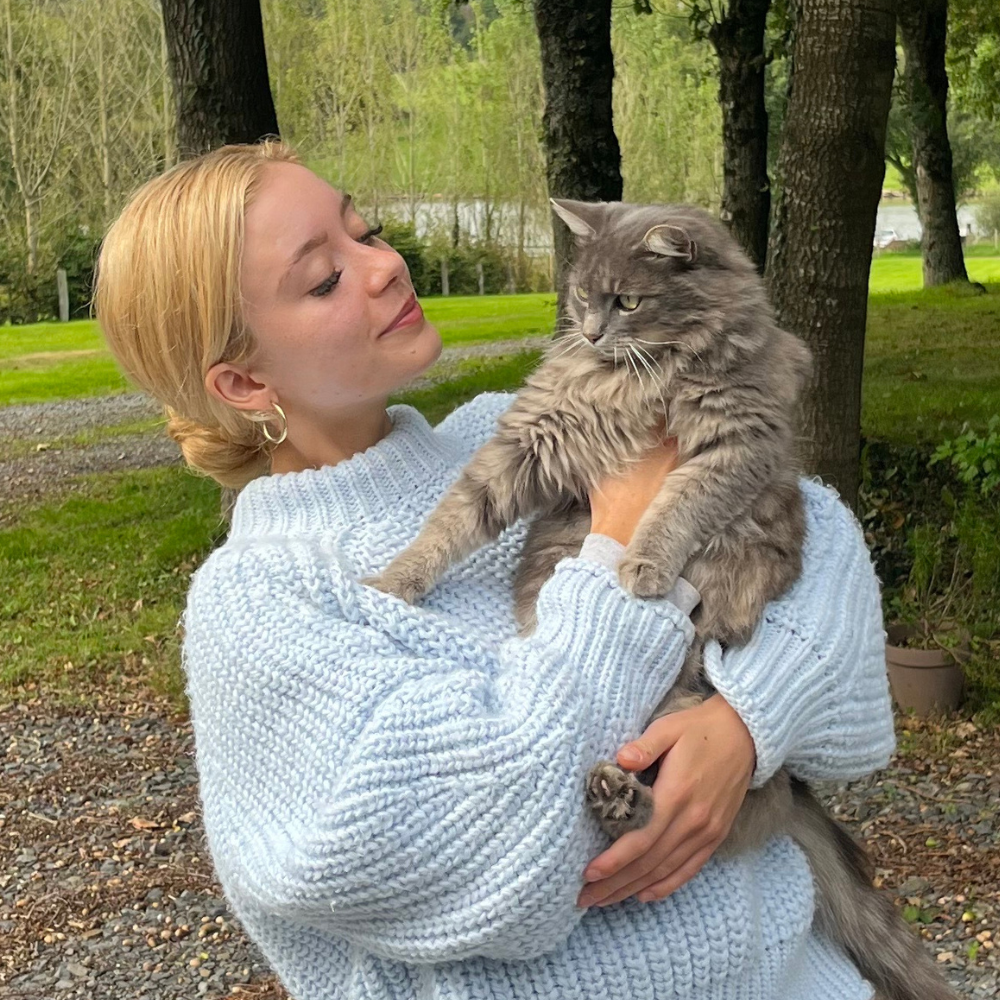
Megan is a Staff Writer at PetsRadar, covering features, reviews, deals, and buying guides. She has a wealth of experience caring for animals, having grown up with dogs, cats, horses, guinea pigs, and more throughout her life. She studied BA Journalism at the University of Westminster, where she specialized in lifestyle journalism and was editor of Smoke Radio’s lifestyle website. Megan works alongside qualified vets and accredited trainers to ensure you get the best advice possible. She is passionate about finding accurate and helpful answers to your pet-related questions.
